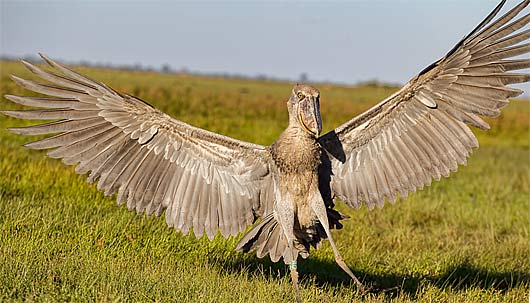Shoebill – Giant Peculiar Bird of Africa
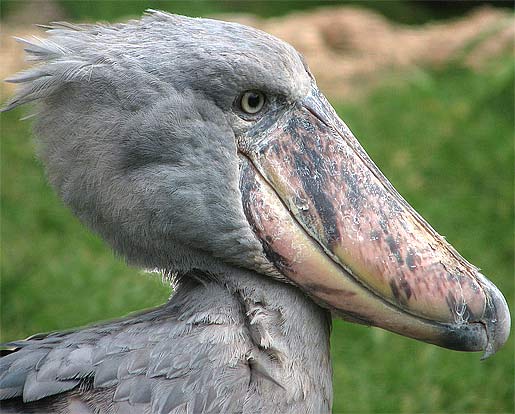
Also known as the “whalehead” or “shoe-billed stork” because of its similar appearance to the baby bringing bird, the shoebill is a large bird that lives all across tropical Africa. With a distribution that covers Sudan, Congo, Uganda, Rwanda, and Tanzania; and with isolated populations in places like Kenya, Cameroon, Ethiopia, Malawi, and Botswana. It is not very closely related to the stork, but closer to pelicans and herons.
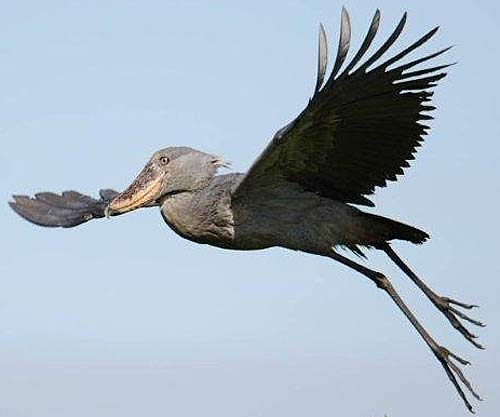
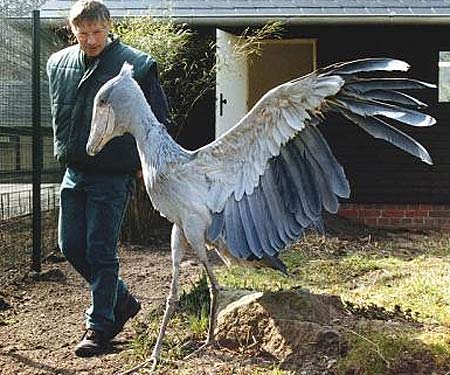
The shoebill is one of the more widely seen birds on the African continent despite its status as vulnerable to extinction. Its population usually coincides with populations of lungfish, which are one of its chief sources of nutrition along with tilapia, catfish, baby crocodiles, frogs, water snakes, and other small aquatic species. It catches prey through tactile hunting, using its sharp bill to launch quick strikes into the water and impaling prey. It tends to stand very still for long periods of the time atop the water and wait for prey to come to it, so its methods are sometimes disturbed by other species more violent motions.
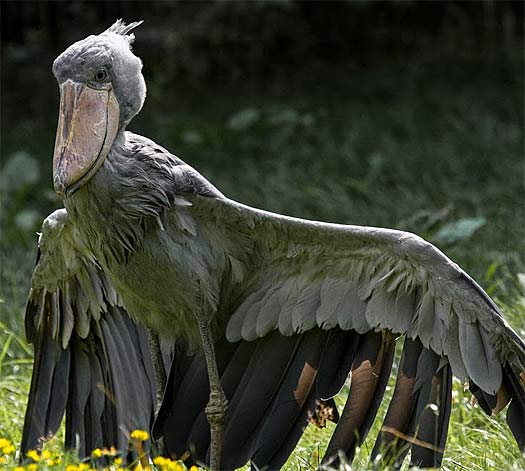
The shoebills are solitary creatures, and never hunt near other specimens, maintaining a distance of around 66 ft (20 meters) from other hunting individuals of their species. Due to habitat destruction, there are less than 8,000 members of this species left, with protection efforts in full force to keep them alive. They are large birds, and have been observed at sizes approaching 5 feet tall (152 centimeters) and 16 pounds (7.2 kilograms) in weight. They’re most easily distinguishable by their bulbous beaks, which are often straw colored. Shoebills also happen to be one of the most popularly collected birds in Africa, so there should always be at least a few members of this species for us to appreciate.
